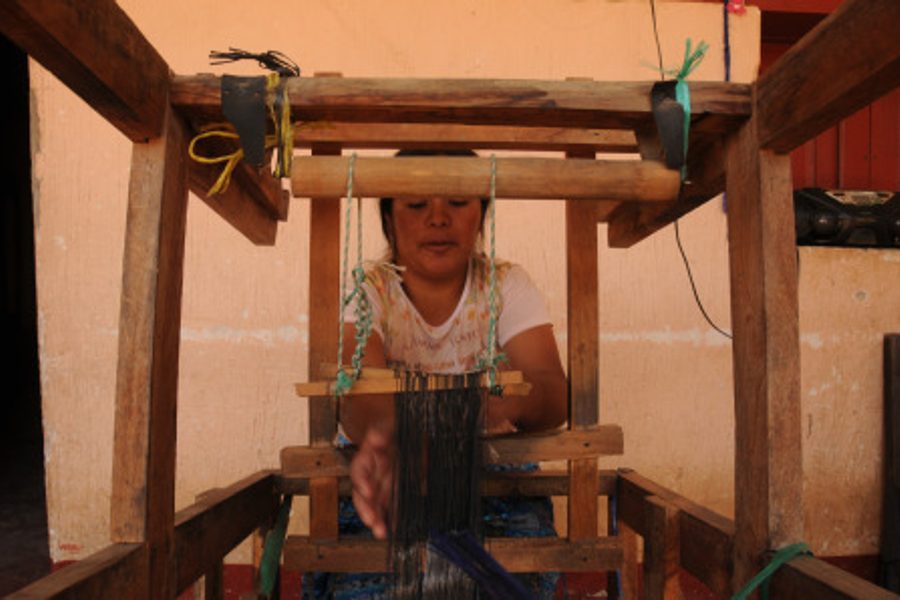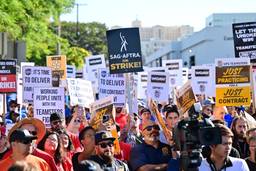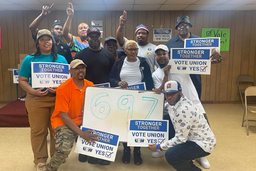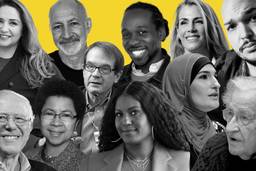
The season of giving has inspired some to look for flickers of hope in the ashes of the economic disaster. Naturally, the holiday charity du jour was microfinance: a community-based system of small-scale lending to help poor people develop mini-enterprises (think village fruit stands and bike repair shops).
So, is this the gift to the world’s poor that keeps on giving? Or will the microlending industry shove marginalized communities into a slickly marketed microbubble?
No one would deny the individual benefits — not to mention the feel-good-factor — of providing seed capital to enable people pull themselves out of poverty. But the sheer scale of the current global financial crisis seems to dwarf the entrepreneurial capital schemes pioneered by organizations like the Grameen Foundation and the web-based charity network kiva.org. Some sobering research has recently questioned whether microcapitalism can dent the tremendous inequalities in the global economic system.
Skeptics say microlending alone won’t end poor people’s struggles or promote sustainable livelihoods on a mass scale. When a crisis strikes – be it a flood or a stock market crash – microloans (which often carry very high interest rates, not unlike subprime loans) can’t make up for the dearth in solid living-wage jobs and macroeconomic stability.
Anis Chowdhury, an economist with the UN-Department of Economic and Social Affairs, argued in a recent paper that while it may dull the edge of chronic abject poverty, “microfinance is not a panacea for poverty reduction… without a supportive macroeconomic, trade and industry policy framework, micro-enterprises will remain micro, with no backward or forward linkages or employment creation possibilities.”
Only concrete pro-labor policies can truly bridge the gap between mere subsistence and economic independence:
…labour should be priced at a “decent” or legislated minimum wage to enhance poverty reduction. Employment (self or otherwise) at a wage below a decent rate only adds to the pool of “working poor”. Earning a few extra cents may be a “big step forward” for a person living on less than $2 a day… but does not generate enough profit for reinvestment to grow his/her business. He/she still remains part of working poor, and perhaps even more vulnerable to shocks due to the debt burden.
Greater access to credit could be a springboard for entrepreneurs and encourage the reinvestment of earnings in their communities. Yet profit-driven microfinance evangelism could end up tethering people to debt the same way the International Monetary Fund and World Bank have chained the Global South to corporate profiteers.
Responding to Grameen Bank’s much-hyped Nobel Prize, economists Susan F. Feiner and Drucilla K. Barker argued in Dollars & Sense that microcredit puts a philanthropic gloss on old-fashioned exploitation:
Neoliberals champion the Grameen Bank and similar efforts precisely because microcredit programs do not change the structural conditions of globalization — such as loss of land rights, privatization of essential public services, or cutbacks in health and education spending — that reproduce poverty among women in developing nations….
Microcredit programs do nothing to change the structural conditions that create poverty. But microcredit has been a success for the many banks that have adopted it. Of course, lending to the poor has long been a lucrative enterprise. Pawnshops, finance companies, payday loan operations, and loan sharks charge high interest rates precisely because poor people are often desperate for cash and lack access to formal credit networks.
Most microlending experiments are centered in poor countries with skeletal financial infrastructure. How about California or Illinois? Could jobless Americans reinvent themselves as their own bosses?
Reapplying its credit model for the “developed” world, Grameen America markets special loan products and services to poor, underbanked households, with a focus on women borrowers, particularly immigrants. The Times recently profiled the group’s dividends in New York City, including a local flower shop and a sidewalk food stand.
But in a country with a well-developed (or overly powerful) financial sector, it’s difficult to picture thousands of laid-off autoworkers going into even more debt to start a mom-and-pop shop, especially when they’re facing foreclosure, or living in depressed towns where consumers just can’t afford to spend on a neighbor’s homemade jam or housekeeping services.
Of course, microfinance and microcredit have the potential to harness big dreams; even critics note the intangible benefits, including enhanced skills, self-confidence and community cohesion. But without broader safeguards, the model can sap energy from mid-level enterprises that would provide a major jobs boost and perhaps counterbalance conventional corporate employers. Will the community cooperation that microcapital purportedly fosters really engender labor solidarity or political empowerment?
The New Yorker’s James Surowiecki said micro solutions may be a poor match for macro problems:
The cult of the entrepreneur that the microfinance boom has helped foster is understandably appealing. But thinking that everyone is, and should be, an entrepreneur leads us to underrate the virtues of larger businesses and of the income that a steady job can provide. To be sure, for some people the best route out of poverty will be a bank loan. But for most it’s going to be something much simpler: a regular paycheck.
For long-term solutions to poverty, Chowdhury concludes:
…the state cannot abrogate its role in the area of social provision. The state also has to be a major player in the design and operation of an inclusive financial sector to cater for the needs of the ‘missing’ middle in the informal and agricultural sectors. This is crucial to ensure that growth is employment-intensive to maximize its impact on poverty reduction.
A microloan is certainly better than nothing, but the system could distract the public from the macro obligations of financial and government institutions toward the working poor: public investment in infrastructure and education, along with strong labor and financial-sector regulations to keep big business from monopolizing opportunities for growth.
Grassroots ambitions can only flourish in an economic landscape where people aren’t just scrounging for the crumbs, but able to pave their own way to economic empowerment.
Michelle Chen is a contributing writer at In These Times and The Nation, a contributing editor at Dissent and a co-producer of the “Belabored” podcast. She studies history at the CUNY Graduate Center. She tweets at @meeshellchen.








